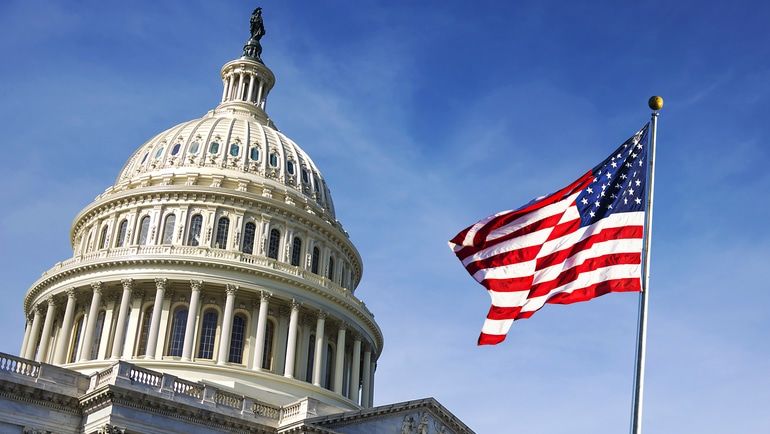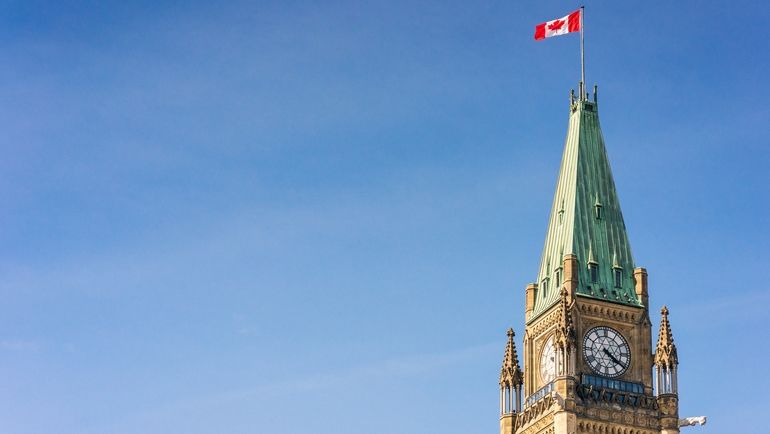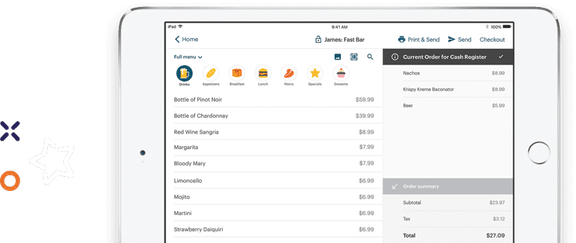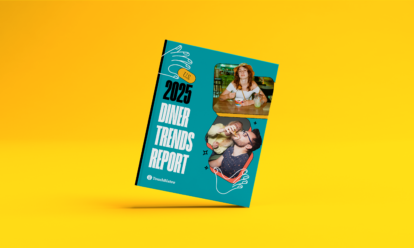People are being forced to face some uncomfortable realities during COVID-19 – uncertainty as to when this will actually end, a sense of grief for what this time could have been, and a real need for cash.
As the number of COVID-19 cases increases, so does the number of restaurants forced to adjust their business model or close down temporarily. As a result, restaurateurs and their teams are turning to government relief programs for support getting through this.
And it’s clear the reliance on these programs is growing. The United States has already committed $2 trillion in funding and relief programs, with more to come. The Canadian government pledged $82 billion towards similar initiatives. And with changing initiatives every day, it’s safe to assume these numbers will grow.
It’s good to know there are many funds being poured into these support initiatives, but plans seem to change on a daily basis. With so much going on, having to dedicate hours to finding these resources can be daunting for anybody.
To help, we’ve rounded up something for everybody in the industry – employers, employees, and those in the industry who want to support new initiatives – so you can find the relief programs that will help you today, tomorrow, and in the coming months.

Relief Programs and Resources for U.S. Restaurants
If you own or are employed by a U.S. restaurant, these are the top resources and relief programs for you. We’ve also included a list of proposed relief programs so you can support them getting off the ground, if you choose.
For U.S. Restaurant Employees
With hours being slashed and doors being shut indefinitely, restaurant employees were some of the first people looking for relief programs to compensate for the lost wages.
Here are the resources and relief programs for staff struggling amidst COVID-19:
- United States Unemployment Insurance: With so many people being out of work, the government has allocated funds for increasing unemployment insurance. The coverage for unemployment insurance varies state by state, so check careeronestop.org, a web page sponsored by the Department of Labor, for resources specific to you. You can get a detailed how-to for applying here, or if you feel prepared, apply directly for unemployment benefits here.
- Restaurant Workers’ Community Foundation: Restaurant Workers’ Community Foundation (RWCF) created the Restaurant Workers COVID-19 Crisis Relief Fund to establish a relief fund for individual workers facing economic or health struggles as a result of coronavirus. You can apply here.
- One Fair Wage: One Fair Wage normally works on legislation to bump the tipped minimum wage, but they have shifted their focus to providing cash assistance to restaurant employees – from servers to delivery workers – struggling right now. You can apply for support here.

For U.S. Restaurant Employers
Minimizing the hit to your bottom line keeps getting harder as more restrictions are put in place to prevent the spread of COVID-19. If you’re struggling with bills or have had to close up indefinitely, you likely qualify for some level of government small business assistance.
Here are some relief programs available:
- U.S. Small Business Administration (SBA) Disaster Loan: Small business owners across the U.S. are eligible to apply for disaster loans and grants. The loans go up to $2 million, and grants go up to $10,000. You can apply for both at the same time through this link.
- U.S. Small Business Administration (SBA) Express Bridge Loans: The Express Bridge Loan Pilot Program allows businesses who already work with SBA loans to get quick access to funds up to $25,000. You can find a loan provider here and work with them to see if you’re eligible.
- Coronavirus Aid, Relief, and Economic Security Act (CARES Act): A major highlight of this act is the tax credits for small businesses that have been fully or partially suspended due to COVID-19 shutdown orders. Eligible businesses can get a refundable 50% tax credit, up to $10,000 per employee. This grant covers a lot of other major benefits for small businesses – you can see a breakdown of everything covered by this act here, in a summary produced by the U.S. Chamber of Commerce.
General Resources for the Restaurant Industry
We are facing some universal struggles during coronavirus.
Here are some general resources for those working in the restaurant industry:
- The Great American Takeout: One major way people have been trying to show their support is by ordering takeout and supporting local businesses, which The Great American Takeout movement capitalizes on. This program encourages Americans to eat at least one takeout meal on each of their takeout days then post it with the hashtag #thegreatamericantakeout. Their website even includes suggested copy if people want to share but aren’t sure what to say – it’s a great cause for restaurant owners to capitalize on and diners to get behind!
- Food Safety and the Coronavirus Disease 2019 (COVID-19): The U.S. Food & Drug Administration put together resources for both members of the industry or concerned consumers. They regularly update these resources as information around COVID-19 evolves, ensuring it’s the latest information. You can read here for top tips on food safety and handling.
- Mental Health America – Mental Health and COVID-19 Information and Resources: In such an unprecedented time, Mental Health America has put together resources to help people cope and take better care of themselves.
- COVID-19 ‘Citizen Science’ Initiative: With so much news constantly being shown to people, it’s hard to know what is actually true. UC San Francisco released this initiative to let any adult with smartphone access register for this course to get up-to-date and scientifically accurate information on COVID-19.
Proposed U.S. Relief Programs
New relief programs are getting implemented every single day. If you want to see what bills are involved in the current session with the U.S. government, you can click here.
This link even gives you an overview of what is currently trending in the searches – which out of the three trending acts, two are COVID-19 relief.
Relief Programs & Resources for Canadian Restaurants
If you own or are employed by a Canadian-run restaurant, these are the top resources and relief programs for you. We have also included a list of proposed relief programs that you can choose to support them getting off the ground, if you choose.
For Canadian Restaurant Employees
Just like their U.S. counterparts, Canadian restaurant employees were some of the first hit by restaurant cuts as a result of coronavirus. Prime Minister Trudeau quickly upped government funding to support laid off staff.
Here are some of the relief programs to consider:
- Canadian Employment Insurance (EI): Canadian Employment Insurance provides up to 15 weeks of income replacement for lost hours due to COVID-19. The one-week waiting period for EI sickness benefits has also been completely waived for new claimants who are currently in quarantine. You can see a general overview of Canadian EI benefits here, and learn more about the changes in benefits specifically related to COVID-19 here. If you are ready to apply, click here.
- Canada Emergency Response Benefit: The government has proposed legislation to start the Canadian Emergency Response Benefit (CERB). This is a taxable benefit that would provide $2,000 monthly (up to four months) for people who lose their income due to COVID-19 layoffs. Workers who are still employed but not receiving their income can also apply for this benefit. Learn more about applying and the full reach of the CERB fund here.
- Emergency Benefits by Province: While the federal benefits are a huge part of the support offered, each province has their own relief programs and initiatives you can take advantage of. For example, BC has an additional one-time payment of up to $1,000 for individuals. Read the list of benefits by province here to see what additional programs may be in your area.

For Canadian Restaurant Employers
If you are a business owner, chances are you’ve seen a hit to your bottom line as a result of COVID-19.
Here are the top resources you need to find the right relief program for you and apply for funding to get through this:
- Canada’s COVID-19 Economic Response Plan – Support to Businesses: You can access the full overview of Canadian support for businesses here, including resources for avoiding layoffs, where to get business credit, and new timelines for paying income taxes. This relief program also includes a 75% subsidy for wages for up to three months to help businesses keep workers on payroll, up to $1,350 per employee of $25,000 per employer.
- Business Credit Availability Program (BCAP): Through this program, Export Development Canada (EDC) and the Business Development Bank of Canada (BDC) will provide more than $65 billion in direct lending to Canadian business. You can contact your financial instruction directly or email BDC here or EDC here, where appropriate for your business, and they will support you through the application.
- Work-Sharing Temporary Special Measures: Issued as part of Canada’s plan to keep businesses operational while avoiding mass layoffs, work-sharing. The program provides EI benefits to eligible employees who agree to reduce their normal working hours and share the available work. This lets employers keep an experienced team on payroll and avoid future recruitment of new staffers. You can see if your restaurant is eligible for this kind of temporary working schedule here.
- Canadian Centre for Occupational Health And Safety COVID-19 Courses: To help employers keep their staff safe, the Canadian Centre for Occupational Health and Safety (CCOHS) is offering courses for free, including Pandemic Planning. You can see a list of the free courses here.
General Resources for the Restaurant Industry
While there are some relief programs and resources that aren’t applicable to everybody, we are facing some universal struggles during coronavirus.
Here are some general resources for those working in the restaurant industry:
- Canadian Food Inspection Agency – Coronavirus Disease (COVID-19) CFIA Information for Industry: The Canadian Food Inspection Agency (CFIA) has put together resources for Canadian businesses specifically in the food and hospitality industry to ensure business owners and staff are smart and safe in their practices. You can read more here.
- Government of Canada – Coronavirus Disease (COVID-19) Awareness Resources: The Government of Canada grouped together all the must-know information on everything COVID-19 so you’re informed about what’s going on and how to best protect yourself and loved ones.
- CAMH – Mental Health and the COVID-19 Pandemic: As the whole world faces circumstances no one has lived through before, it’s natural to struggle with different levels of stress, anxiety, and fear. The Centre for Addiction and Mental Health has put together resources to help people cope with these new circumstances
- SaveHospitalityCA: Independent Canadian restaurants and suppliers have formed a plan together to show how all levels of government can support the industry right now. Their plan is divided into three areas of government support – immediate relief, immediate protection, and help to reopen. You can read their fully detailed plan here and share your support using the hashtag #SAVEHOSPITALITYCA. It’s a great cause to support as somebody in the industry or outside of it.
Proposed Canadian Relief Programs
Just like the U.S., there are new proposed relief programs popping up for Canadian businesses on what feels like a daily basis.
If you want to see what bills are involved in the current session with Canadian Parliament, including their progress moving through the different levels of government, you can click here.
There are new relief programs being passed every day – take the time to research which one is right for you in the short term and the long term, because we will end up on the other side of this.
We want to offer you some support, as well. You can learn more about handling COVID-19 at your restaurant here or email us at [email protected] to let us know if there are any areas we can offer you more information on.






